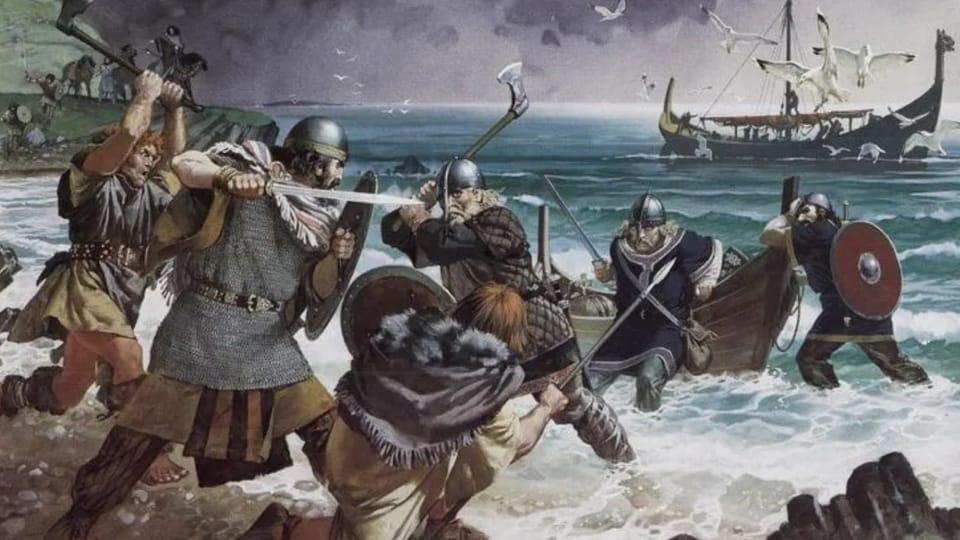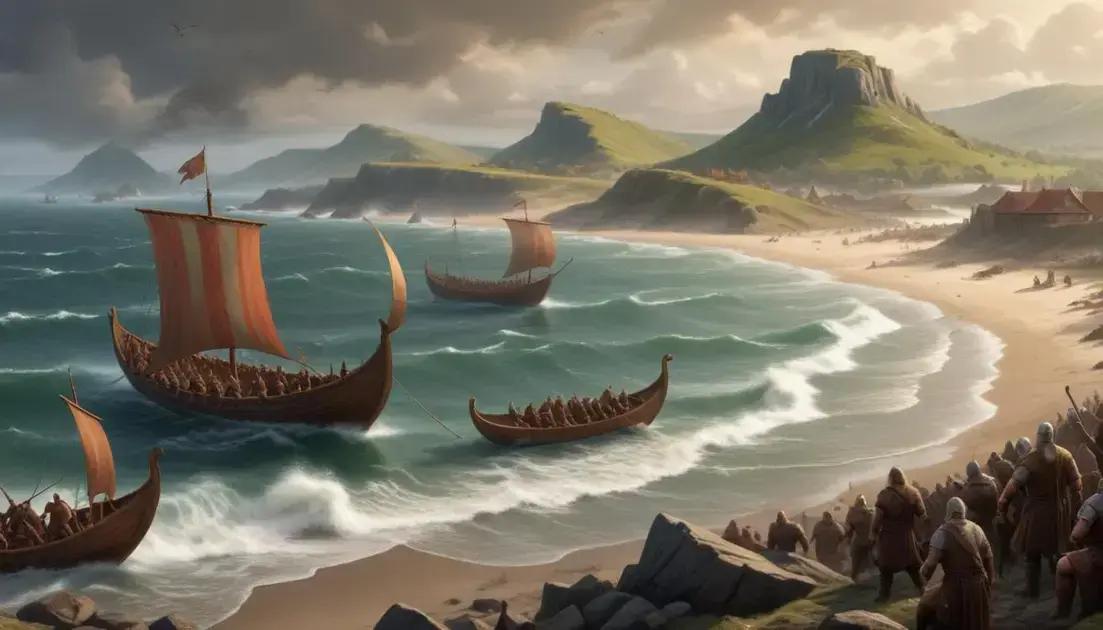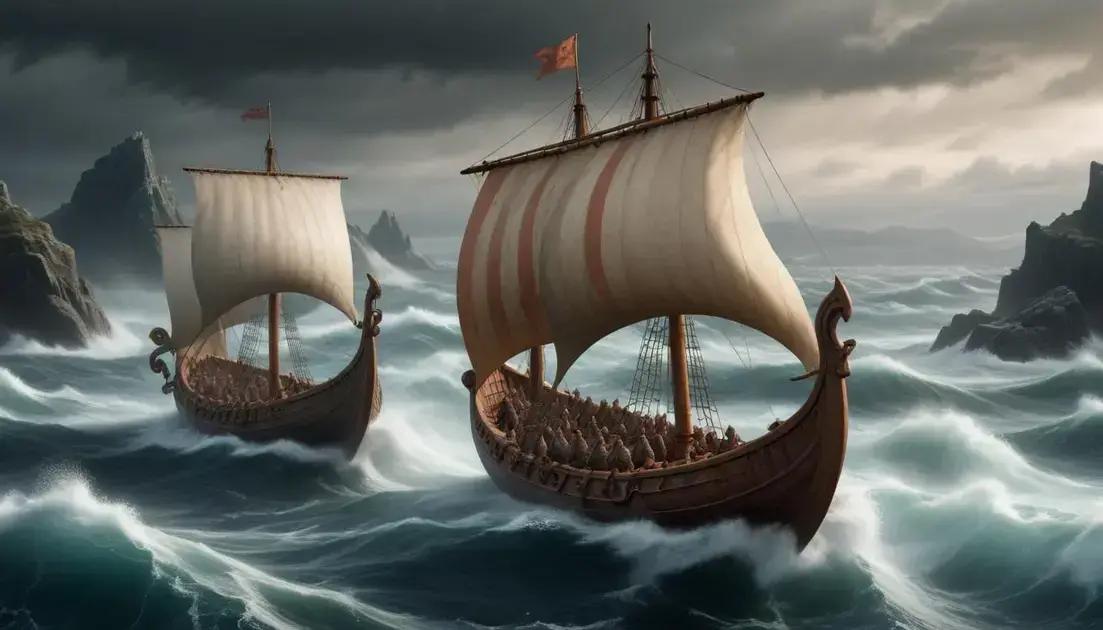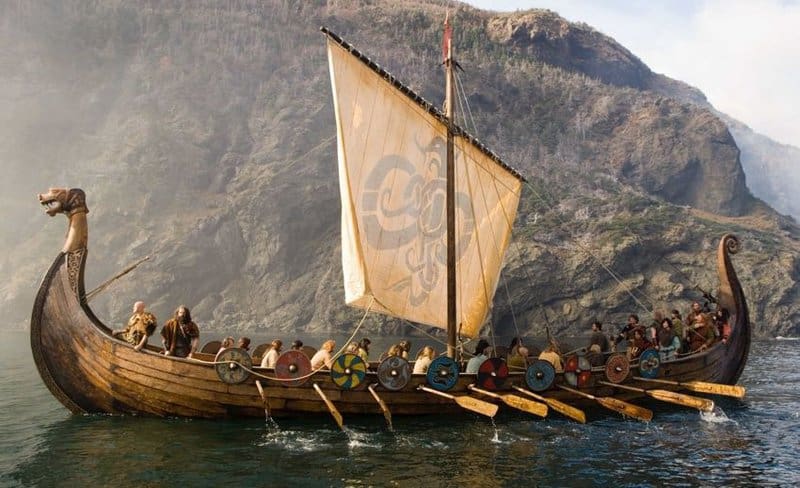
The Viking Age: Raiders, Traders, and Settlers
The Viking Age: Raiders, Traders, and Settlers – A Comprehensive Exploration
The Viking Age, spanning from the late 8th to the mid-11th century CE, represents a pivotal period in European history. Characterized by intense exploration, widespread raiding, and significant settlement, this era saw Norse seafarers and warriors from present-day Denmark, Norway, and Sweden profoundly impact the continent’s political, social, and cultural landscape. Their legacy continues to resonate today, shaping our understanding of medieval Europe and inspiring countless narratives and investigations. This comprehensive exploration delves deep into the world of the Vikings, examining their complex society, their far-reaching voyages, their devastating raids, their sophisticated trade networks, and their lasting contributions to the tapestry of European civilization.
Who Were the Vikings? Unraveling a Complex Society
The term “Viking” itself is often misunderstood. It wasn’t a self-identifier; rather, it’s a modern designation for the Norse people who undertook seafaring expeditions during this period. They identified themselves primarily by their regional affiliations – Danes, Norwegians, or Swedes – reflecting a fragmented yet interconnected cultural sphere. While often romanticized as solely fierce warriors, the Vikings constituted a multifaceted society encompassing farmers, traders, craftspeople, and skilled navigators.
Their social structure was hierarchical, broadly categorized into three primary classes:
Karls (Free Men): The majority of the Viking population, comprising free farmers, craftsmen, and warriors. Their status varied based on land ownership, wealth, and social connections. They held certain rights and responsibilities within their communities.
Jarls (Nobles): The aristocratic elite, often hereditary chieftains or leaders wielding considerable political and military power. They controlled significant land holdings and commanded loyal followers. Their influence extended across multiple communities and sometimes even encompassed larger regional power structures.
Thralls (Slaves): Individuals who lacked freedom and were subjected to the will of their owners. They performed various tasks, from agricultural labor to domestic service, and their status was often determined by conquest or debt bondage. The treatment of thralls varied considerably across different regions and time periods.
Beyond this basic framework, societal organization also involved complex kinship systems, clan structures, and regional variations in social norms. The influence of religious beliefs, primarily Norse paganism with its pantheon of gods and intricate mythology, permeated all aspects of Viking life, from daily routines to major events like warfare and feasts. This mythology, preserved in sagas and runic inscriptions, provides valuable insights into their worldview and values.
The Vikings’ material culture reflects their skills and ingenuity. They were renowned for their mastery of metalworking, particularly in the creation of intricate weaponry, jewelry, and decorative objects. Their woodcarving skills are evident in the construction of their longships and the decoration of everyday items. Textile production, using wool, linen, and other fibers, was another important aspect of their economy, providing clothing, tapestries, and other essential goods. These crafts contributed significantly to both their domestic economy and their trade networks.
Viking Raids and Conquests: A Legacy of Violence and Expansion
While trade formed a crucial part of the Viking economy, they were equally notorious for their raids and conquests. These weren’t merely acts of random violence; rather, they were strategic operations, often targeting monasteries, towns, and settlements rich in resources. Monasteries, in particular, proved attractive targets due to their perceived wealth in precious metals, religious artifacts, and readily available provisions.
The raid on Lindisfarne Monastery in 793 CE is often cited as the pivotal event marking the beginning of the Viking Age. This attack, swiftly executed and laden with symbolic weight, sent shockwaves across Europe, signifying the arrival of a new era of instability and upheaval. The Vikings’ mastery of shipbuilding and seafaring allowed them to launch lightning-fast attacks, often appearing unexpectedly and striking with devastating efficiency. Their longships, capable of navigating both open seas and shallow rivers, facilitated access to inland settlements, increasing the scope of their raids.
The impact of Viking raids extended beyond immediate devastation. The fear they instilled prompted the construction of defensive structures, such as fortified settlements and castles. The economic burden of repeated raids placed pressure on existing political structures, forcing rulers to consolidate power and implement new defensive strategies. The constant threat of attack necessitated the development of more sophisticated military organizations and the adaptation of defensive tactics across many European kingdoms.
The Vikings didn’t limit themselves to raiding; they also engaged in large-scale conquests and established permanent settlements across Europe. The Danelaw, a significant territory in eastern England under Viking control, stands as a testament to their ability to establish enduring political and social influence. Similarly, their conquests and settlements in Normandy (France), Ireland, Scotland, and even parts of Russia left a lasting imprint on the local landscapes, languages, and cultures. These settlements weren’t merely military outposts; they represented attempts at integrating into the existing social fabric, leading to cultural exchange and the gradual assimilation of Viking traditions and customs.
Viking Trade and Commerce: A Vast Network of Exchange
The Vikings weren’t simply raiders; they were also highly skilled traders, establishing extensive commercial networks that stretched across Europe and beyond. Their longships, acting as both warships and merchant vessels, facilitated the transport of goods across vast distances, linking Scandinavia with the British Isles, continental Europe, the Baltic region, and even the eastern reaches of Europe, including the Byzantine Empire and the lands of the Rus’.
Their trade encompassed a diverse range of goods:
Furs: A highly valuable commodity in European markets, particularly those of the Byzantine Empire and the Abbasid Caliphate. The Vikings controlled access to vast fur resources in Scandinavia and northern Russia.
Slaves: A grim but unfortunately significant part of their trade. Captured individuals were sold into slavery across Europe, reflecting the harsh realities of the time.
Amber: This prized material, sourced from the Baltic region, was highly sought after for its beauty and perceived magical properties.
Wool and Textiles: High-quality wool and textiles, produced in Scandinavia, were traded extensively across Europe.
Metalwork: The Vikings’ skills in metalworking led to the export of weapons, tools, and jewelry, valued for their quality and craftsmanship.
Timber and Wooden Goods: The abundance of timber resources in Scandinavia enabled the Vikings to produce and export various wooden goods, including ships, furniture, and building materials.
The Vikings’ trade networks weren’t solely based on physical exchange; they also involved intricate systems of credit and debt, showcasing a sophisticated understanding of commerce. They utilized various forms of currency, including silver coins and ingots, and developed complex trading relationships with diverse populations, often adapting to local customs and market demands. The long-distance trade routes they established contributed significantly to the development of broader European commercial networks and facilitated the exchange of ideas and technologies.
Viking Settlements and Exploration: Pushing the Boundaries of the Known World
As their voyages extended further afield, the Vikings established permanent settlements in various regions, demonstrating their adaptability and willingness to integrate into new environments. The establishment of these settlements marked not just territorial expansion but also the transmission of Viking culture and societal structures. The long-term impact of these settlements is evident in the linguistic, cultural, and genetic legacies found in the regions they inhabited.
The Danelaw in England provides a compelling example. This region, under Viking control, retained a distinct cultural identity, with Norse influences evident in its law codes, language, and social structures. The assimilation process was complex, involving both conflict and cooperation between the Vikings and the existing Anglo-Saxon population. This co-existence led to a fascinating blend of cultures, showcasing the dynamism of intercultural interaction in the medieval world.
Beyond the established settlements in England, Normandy, Ireland, and Scotland, Viking exploration extended to far-flung corners of the known world. Their voyages reached the Byzantine Empire, the Caspian Sea, and even North America, centuries before Columbus. These explorations, fueled by a spirit of adventure and a desire to exploit new resources, involved navigating treacherous waters and coping with unfamiliar terrains. The evidence of Viking settlements in Greenland, Newfoundland, and possibly even further south on the North American coast, reveals the extent of their maritime capabilities and their daring willingness to push the geographical boundaries of their era.
These voyages not only expanded geographical knowledge but also facilitated the exchange of goods and ideas across vast distances. The Vikings acted as vectors for the transmission of technologies, cultural practices, and religious beliefs, influencing the societies they encountered. Their maritime prowess and navigational skills deserve particular acknowledgement, illustrating a level of expertise that was truly remarkable for their time.
Viking Legacy and Impact: A Lasting Impression on Europe and Beyond
The Vikings’ impact on European history is profound and multifaceted. Their influence can be observed in various aspects of European civilization:
Language: Norse words and phrases are integrated into many European languages, particularly English and French, reflecting the linguistic exchange resulting from Viking settlements and interactions.
Law and Governance: Viking legal traditions, particularly those that developed within the Danelaw, influenced the legal systems of England and other regions, contributing to the development of common law.
Architecture and Art: Viking artistic styles, especially in metalwork and woodcarving, left a lasting imprint on artistic traditions, demonstrating a level of craftsmanship that continues to fascinate and inspire.
Religion: While initially practicing Norse paganism, many Vikings converted to Christianity, influencing the spread of Christianity across Europe and contributing to religious syncretism in various regions.
Genealogy and Genetics: Modern genetic research has revealed the extent of Viking genetic contributions to European populations, demonstrating the lasting impact of their migrations and settlements.
Shipbuilding: Their sophisticated shipbuilding techniques influenced maritime practices across Europe, shaping the design and construction of ships for centuries.
The Viking Age was not merely a period of conquest and expansion; it was also a period of significant cultural exchange and adaptation. The Vikings absorbed elements from the cultures they encountered, incorporating foreign ideas and traditions into their own cultural practices. Conversely, their interactions significantly impacted the societies they encountered, leaving a lasting mark on language, law, art, and social structures.
The Viking legacy is a complex and often contradictory one. It involves elements of violence and conquest, alongside remarkable feats of exploration, trade, and cultural exchange. Studying this era demands a nuanced approach, recognizing both the brutality of their raids and the ingenuity of their cultural achievements. Their story serves as a powerful reminder of the dynamism of human societies and their capacity to both destroy and create, to both conquer and assimilate, and ultimately, to shape the course of history. Understanding the Viking Age provides vital context for comprehending the formation of modern Europe and its complex cultural tapestry. The exploration continues, with new archaeological discoveries and historical research constantly adding depth and richness to our understanding of these fascinating people and their enduring legacy.


